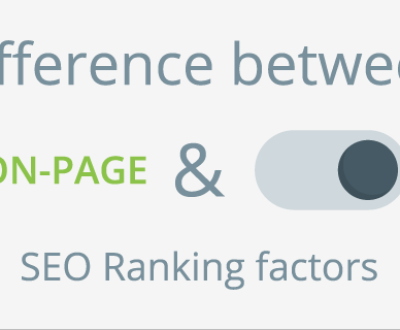
To get the top in the SEO race, you need to stay a few steps ahead of your competition. For this, you need to analyze everything your competitor is doing. You need to track their important keywords, blogging strategy, backlinks, social media performance and key traffic sources. Let’s look at each area that you need to focus on and which tools you need to use to get the best results.
The first step is to identify your competitors and only then can you find ways to get ahead of them. Here is listed a step by step method to analyze your competitor’s SEO strategy.
1> Find out the Secrets hidden in the Keywords

The simplest way to know who your competitor is by looking at all the ‘Keywords’ in your niche. They are your closest rivals, maybe ones who are selling the same product as you. They are fighting for the same long-tail keywords that you wish to rank for.
Then there are the ones who dominate your market. Big brands and information websites that have numerous web pages that rank for all the single-word keywords and short to medium phrases. They are virtually no competition to you since it is impossible to rank for such keywords.
Recommended Tools:
Once you are listed down all your competitors, you can use SEMRush or SmartSERP keyword discovery tool to find out all the keywords these websites are ranking for and the search rankings for all their web pages. This gives you a clear picture what you are up against. Use KW Finder to find keyword difficulty scores for the keywords you want and then you can start with attacking keywords that are easier to rank for and avoid competing with what your competitors are good at.
2> Collect all the information about their Backlinks

To be able to beat your competition when it comes to backlinks, you need to learn every new trick that you come across and utilize it. Remember that your competitor is also keenly looking at your linking strategy to learn from it and implement it. To stay one step ahead of your competition, you need to compare and study in detail how your competitors are building their links.
You need to have information about all their backlinks so that you can analyze it and understand their strategy when it comes to linking. Not only that, it will also show you numerous opportunities to connect with publications, blogs and influencers who are interested to publish information about your industry.
Recommended Tools:
The more data you have the better. The best place to get the complete list of links pointing at your competitor’s website is using the Monitor Backlinks tool or the ever dependable Ahrefs. Once you have the information, you can use the metrics provided to see the quality of links and the quantity from different sources. If you are ready to spend, then the Majestic tool would be great for you.
3> Do a thorough Content Quality Check

One of the most important pillars on which your competition’s success or failure depends on their content. It is clear that the more original, informational and valuable the content is to the user; the higher chances for that webpage to go up in the rankings. You need to note down the different long-tail keywords and synonyms that your competitors are using.
What is the niche they are targeting? How is their content performing? What is the feedback users are giving? How regularly do they post? How often are they producing white papers, industry reports, or infographics? Is their content strategy working? When you start answering these questions, a lot of opportunities will show up for you to improve your content creation efforts.
Recommended Tools:
You need to find popular topics, niches and trending news that you can write about and try to identify if you are missing out on content that your target audience needs. Buzzsumo is an excellent tool to find which of your competitors’ posts are performing well, while using Google Alerts is a great way to keep a close tab on any new content being published.
4> Monitor their Social Media activities

One of the biggest sources of traffic to any website today is social media. Not only will writing great content do, you need to put it out there in as many platforms as possible to increase its reach. Social media performance is slowly becoming an important factor for search engines like Google to judge your brand’s authority and likeability.
You need to keep track of all the social bookmarking websites to see where they are regularly posting their content. Also you need to see how they are engaging with their followers, the kind of social media posts they put up and how quickly they are able to grow their fan base.
Recommended Tools:
To track the social media performance of your competition, you can use tools like Social Mention and Simply Measured to go about your analysis in a simple yet detailed manner. Don’t forget to manually go back to their posts in the last five years and see the tipping point where they started getting a large number of followers monthly and try to identify the strategy they used.
5> Analyze data with Competitive Intelligence Tools

The more data you have about your competition; the greater the advantage when it comes to creating a strategy to get ahead in the rankings. There is a whole new segment called competition intelligence tools out there that help you compare your website with your competition on a number of key metrics with accurate data showing your exact performance.
Recommended Tools:
To know your customer better than your competition and understand traffic trends;, you can take the help of Quantcast. When it comes to measuring the traffic coming to your website compared to your competitors or finding similar sites to yours; Alexa is most powerful tool out there. It can also show you all the websites that share a similar audience to yours.
While SimilarWeb takes it a step forward by showing you all of your competitor’s online strategy plus the customer intent behind the searches and shows the exact data on where the traffic is coming for every website you want to monitor. And the best part is that it benchmarks you against your competition on numerous factors so that you know exactly what needs to improved.
6> Full Website Scan and Evaluation

At the end of the day, user satisfaction is what Google is trying to measure. So when it comes to getting a higher rank than your competitor’s, you need to be able to analyze the satisfaction level of customers and see how you can improve the level of satisfaction of your users. By analyzing Google Business reviews, testimonials and forums; you will get a good idea. You can also go ahead and do a survey to collect data directly from users and then analyze why they like it.
You need to go on to all your competitor’s websites and try to measure all the factors that contribute to creating the User Experience that is being provided. Go ahead and rate the website on website design to content quality to usability to page loading speed. After all, On-Site SEO is something you cannot afford to make any mistakes with. Try to capitalize on your competitor’s mistakes and also learn from the best practices they are following.
Recommended Tools:
Using Moz Pro, you can do a SEO Audit for all the On-Page factors like errors in title tag, search engine crawlability, broken links, blocked pages, server redirects, etc. SEO SiteCheckup is another powerful tool that detects your SEO issues and shows your performance in a the form of a detailed yet simple to understand report. Also it allows you to compare your SEO performance against all your competitor’s.
Conclusion
Do not copy the strategies or tricks used by your competitor’s without first understanding their short-term and long-term impact. Competitor analysis is needed to find opportunities to improve your SEO strategy by ensuring that you are strong on all the fronts compared to your competitor’s.
The data you collect about your competition helps you to understand where you need to improve and thus you can tinker with your strategy to beat them on each ranking factor so that, thereby ensuring a higher rank for your website compared to your competition.








